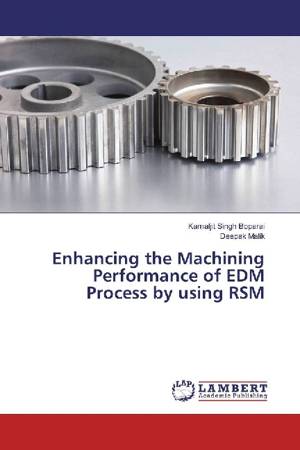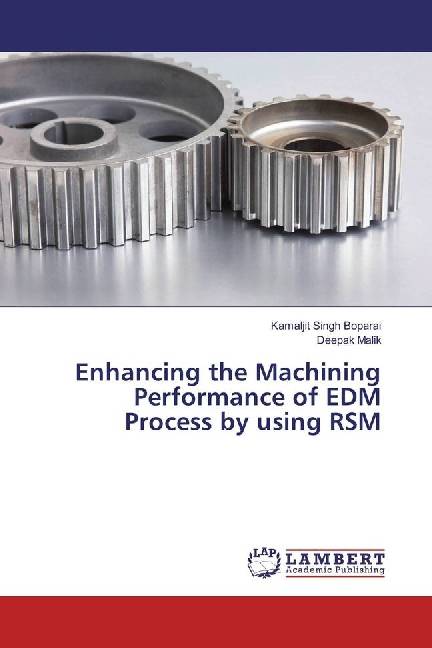
- Afhalen na 1 uur in een winkel met voorraad
- Gratis thuislevering in België vanaf € 30
- Ruim aanbod met 7 miljoen producten
- Afhalen na 1 uur in een winkel met voorraad
- Gratis thuislevering in België vanaf € 30
- Ruim aanbod met 7 miljoen producten
Zoeken
Enhancing the Machining Performance of EDM Process by using RSM
Kamaljit Singh Boparai, Deepak Malik
Paperback | Engels
€ 35,45
+ 70 punten
Omschrijving
The present work investigated the EDM process by using the new approach in order to maximize MRR and minimize EWR by introducing conductive Column (CC) in the workpiece material. The analytical parameters such as voltage (V) and conductive column varied in a range and their effect was realized by using response surface methodology (RSM). The remaining process parameter remains constant throughout the experimentation. The work material is AISI 1025 steel (having moderate conductivity) and copper electrode having diameter 10mm were selected for the experimentation. The face centred composite designs of RSM have been made to optimize process parameters of Die sinking EDM with an objective to maximize the MRR and minimize the EWR. The effects of gap voltage and conductive column and their interaction on the basis of two responses such as MRR and EWR were investigated. The contour plots were generated to realize the effects on responses. ANOVA and regression test were also performed to differentiate the significant and insignificant terms. The multiple response optimization method based on desirability function approach (DFA) was applied to find optimum values of input parameters.
Specificaties
Betrokkenen
- Auteur(s):
- Uitgeverij:
Inhoud
- Aantal bladzijden:
- 64
- Taal:
- Engels
Eigenschappen
- Productcode (EAN):
- 9783659936739
- Uitvoering:
- Paperback
- Afmetingen:
- 150 mm x 220 mm

Alleen bij Standaard Boekhandel
+ 70 punten op je klantenkaart van Standaard Boekhandel
Beoordelingen
We publiceren alleen reviews die voldoen aan de voorwaarden voor reviews. Bekijk onze voorwaarden voor reviews.








